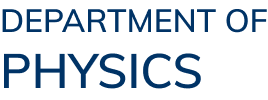Abstract
Optical and acoustic pulling forces—where objects are drawn toward the source of an incident wave—offer exciting possibilities for contactless manipulation in areas such as biomedical engineering, materials assembly, and nano-robotic handling. This thesis investigates the generation of such pulling forces by leveraging structural effects across different regimes defined by the relation between an object’s feature size and the wavelength of the wave. The central theme is to manipulate wave scattering—particularly enhancing forward scattering—to induce pulling forces via momentum conservation.
First, I design polarization-multiplexed metasurface holograms where the wavelength is much larger than the structural unit cells, situating the study in the metamaterial regime. Using both Gerchberg–Saxton and deep-learning-based inverse design, we achieve precise beam steering and holograms through control of the full Jones matrix, providing foundational insight into how subwavelength structures can shape wavefronts. Building on this understanding, I next explore optical pulling forces when the wavelength is comparable to the lattice constant of a periodic medium. We reveal that Rayleigh–Wood anomalies in such 1D lattices lead to robust pulling forces by redirecting incident energy into the forward direction. Finally, I extend the concept to the regime where the wavelength is smaller than the object size, demonstrating acoustic pulling forces on macroscopic bodies. A developed multipole expansion method is introduced to analyze the angular momentum coupling responsible for pulling forces, offering a general tool for understanding acoustic radiation forces in complex geometries.
Overall, the thesis unifies pulling force generation across subwavelength, resonant, and geometric scattering regimes, highlighting structural design as a powerful means to control wave momentum transfer. The principles studied not only span a wide range of wavelength regimes but are also broadly applicable to both electromagnetic and acoustic systems, laying groundwork for future technologies in precise, remote manipulation.
